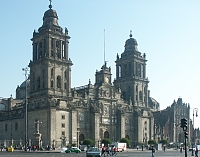
|
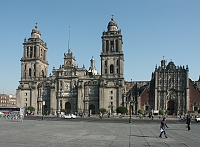
|
The front facade with attached parish church to the rightBuilt over several centuries the metropolitan cathedral is a mixture of styles--both Baroque and Neoclassical. Like Spanish cathedrals, it features a cross plan. |
| |
|
The mixture of stylesMuch of the lower portion seems Baroque (twisted columns, elaborate volutes, extensive decoration) while the upper portions are more restrained, especially evident in the square bell towers. The bell towers are 62 meters high with pinnacles in the shape of bells. Today they have 34 bells. |
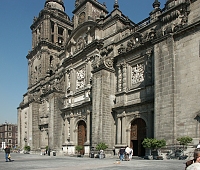
|

|
| |
|
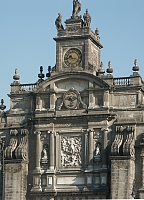
|
Entrance facade--topAt the top are free-standing statues of the three theological virtues, faith (left figure), hope (top figure with the cross), and charity (right figure with the children), sculpted by Manuel Tolsá in 1813; below the clock is the national seal of Mexico; the relief below the seal depicts the Assumption of the Virgin Mary with sculptures of St. James the Greater (left) and Saint Andrew (right) sculpted by Miguel Ximénez in 1687. |
| |
|
Left: Sagrario metropolitano (the parish church)--from the front; center and right--side entranceThis parish church is annexed to the cathedral. It was constructed from about 1749-1768. |
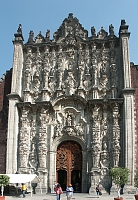
|
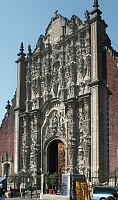
|

|


 Go to the Mexico Index.
Go to the Mexico Index. Click here to return to index of art historical sites.
Click here to return to index of art historical sites.
 Click here to return to index of artists and architects.
Click here to return to index of artists and architects.
 Click here to return to chronological index.
Click here to return to chronological index.
 Click here to see the home page of Bluffton College.
Click here to see the home page of Bluffton College.
